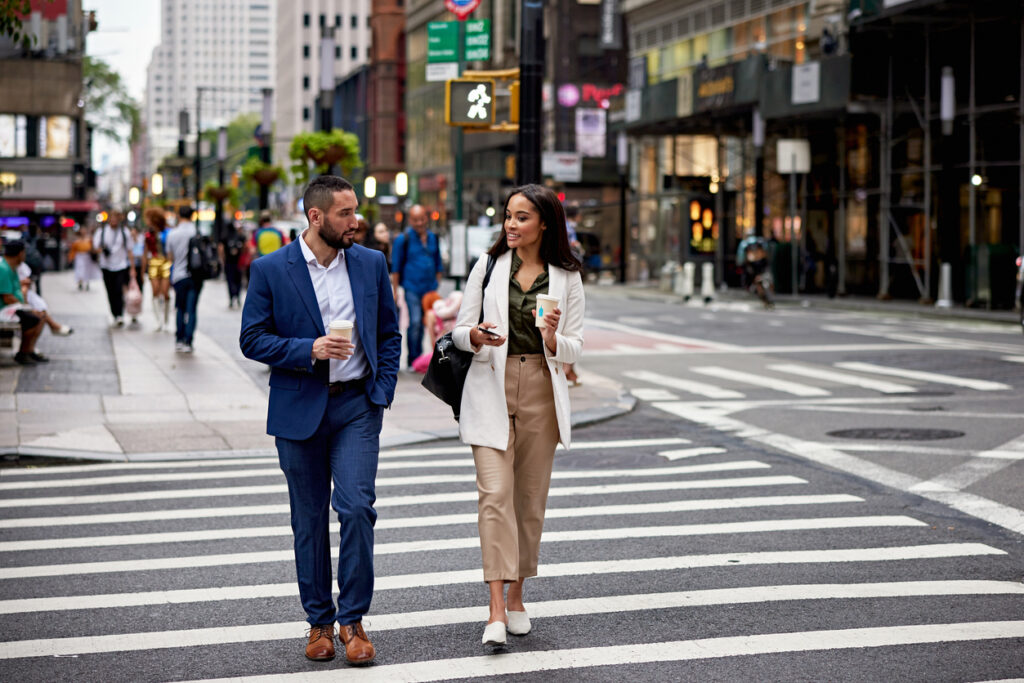LinkedIn’s Experimentation Program Manager Lilli Zinaman talks about the importance of workplace experimentation and innovation in a controlled environment.
Imagine a workplace where mistakes don’t exist. No ideas are bad ideas; only learning experiences. A workplace with endless opportunities to create new ways of working that simultaneously pushes the boundaries of what our perception of work looks like.
Believe it or not, that’s exactly what LinkedIn’s Workplace Lab in Sunnyvale, California is. As the Experimentation Program Manager at the Lab, Lilli Zinaman gives us an inside look at the inner workings of this unique space and how it can benefit the workplace experience as a whole.
Could you briefly touch on your professional background and how you initially got involved in workplace operations?
Zinaman: My background is really a melting pot of different people-focused functions within high-growth startups. I began in recruitment but soon found myself in facilities, event planning, accounting, onboarding—you name it. I eventually landed myself in office management, working closely with leadership teams to steer company culture.
Office managers, especially at startups, are modern-day superheroes. Each one I’ve met can identify with being known as the “everything person.” You need to be extremely agile with a high level of empathy. My roles were always about manning the space, but with a people-centric aspect to it. I had the ability to be in control of the physical layout, but also heavily involved in people’s experiences, learning how they work, and understanding human behavior.
These experiences opened the door for human-centered design, which is something that is huge for us at LinkedIn. It’s about taking the needs and aspirations of the people who will be using the space and designing with all that in mind. I wanted to understand “day zero” and what it meant to actually help design workplaces. That’s what led me to where I am today.
What is human-centered workplace design? Human-centered workplace design is a problem solving approach in design and management, which develops solutions involving a human perspective in the process.
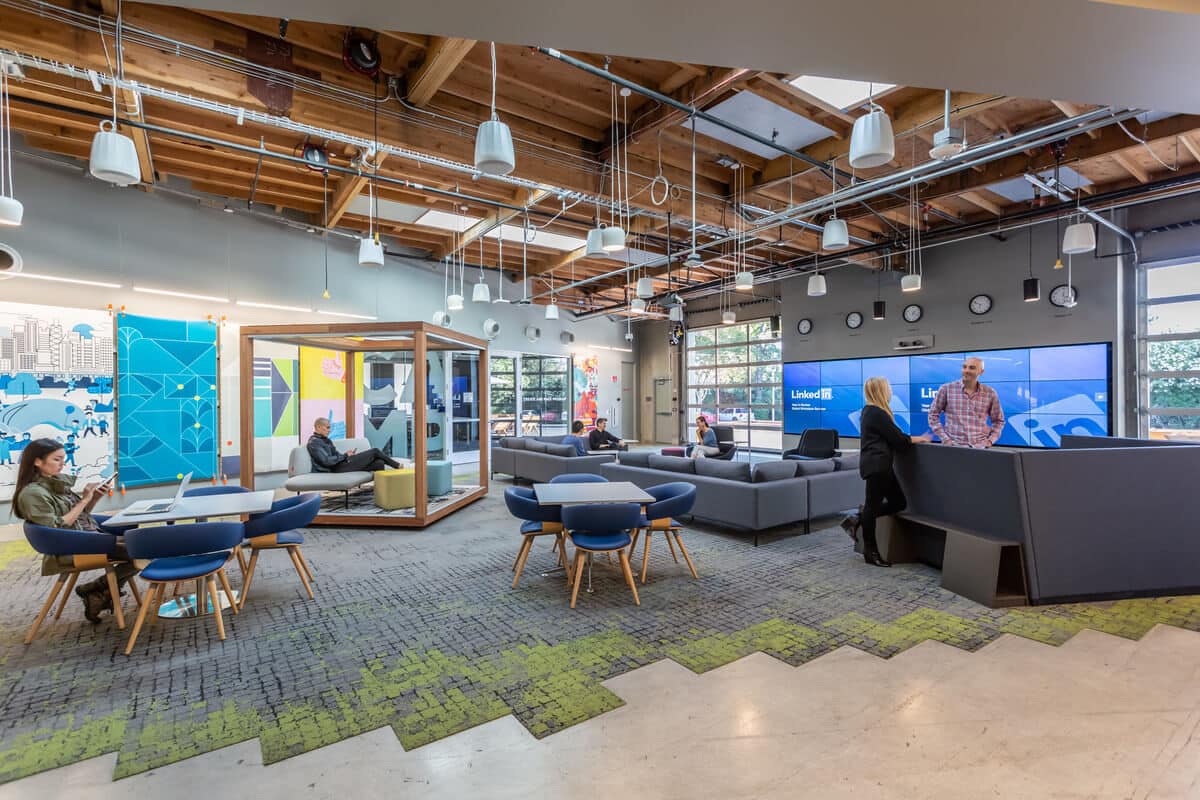
Speaking of where you are today, LinkedIn’s Workplace Lab is a fascinating concept. Could you touch on the history of the Workplace Lab and why LinkedIn set up this kind of environment to experiment with new spaces and services?
Zinaman: The workplace community is changing at such a rapid pace. It’s faster than it’s ever been, and yet it’s never going to be this slow again. Workplace leadership at LinkedIn recognized that instead of just rolling out global changes and hoping for the best, we really needed a space to test things, gather in-depth feedback, and put credibility behind our decisions. We needed to know whether people liked the things we were doing, what issues may arise with a new design, and test in a controlled environment. In addition to the invaluable insights we’d gain, we would ultimately save money, time, and headaches by putting in the work proactively.
That was the driving force behind creating the Workplace Lab, which was built about two years ago. Our slogan for the Experimentation Program is “creating a culture of thoughtful experimentation and intelligent risk-taking.” It’s a space to de-risk the choices we make. At the Lab, we test everything from small improvements to entirely new concepts of how to use space.
We have the ability to test things in a way that people understand. We’re not changing everything at once, we’re doing it at a gradual pace with discipline behind it. We have a structured process that mirrors a scientific method where we have a hypothesis and build a baseline around it, then run an experiment and analyze it.
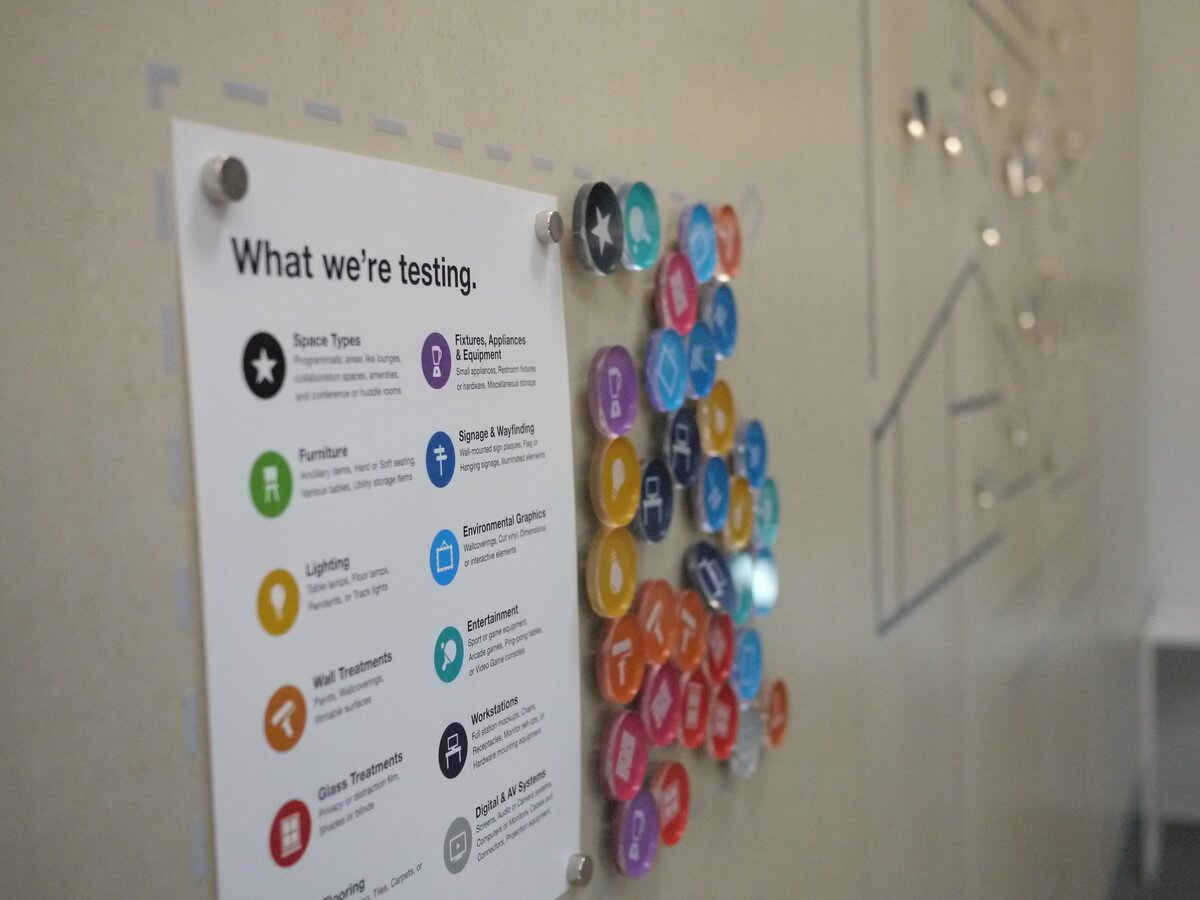
Could you describe some of the unique features of the Workplace Lab and how these are designed to help workplace standards move forward?
Zinaman: The most exciting thing about the Workplace Lab is the ethos of change that we have. If you spend any time with my team, something you’ll hear is that the only failed experiments are the ones where we don’t learn any lessons. Whether a hypothesis is supported or not, it opens the door for so many more questions to be asked. We don’t fear change, we embrace it—I think that really makes the space what it is.
Another unique element of the Lab is the culture of pyschological safety. It’s kind of a buzzword out there right now, but it’s the idea that you can come with candid feedback and openly admit missteps or mistakes while learning from one another. We’re not afraid of experiments that don’t go the way we assumed. It doesn’t matter how large or small it is, any experiment that doesn’t go our way just opens up the possibility for new options. If anything, our experiments energize us.
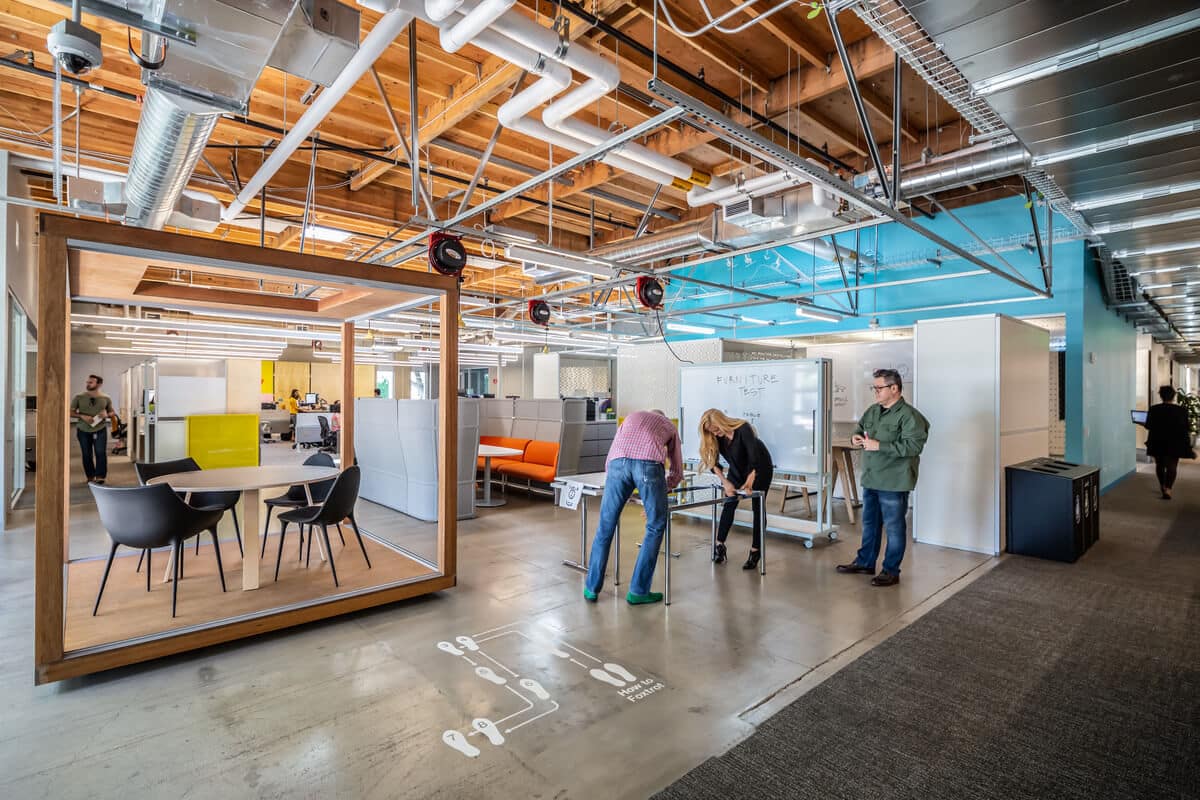
One of the most difficult elements of a workplace to cultivate is culture. How do you try to address this challenge in the Workplace Lab?
Zinaman: So much of culture also has to do with the space that you work in—how it connects to the company’s mission and how it empowers employees to work in an elevated way that offers control and choice.
People want to be proud of their workplace. Our workplaces are the largest canvases for our brands and companies. Putting that at the forefront, it needs to be a space that represents who you are and how people interact with you.
One of our values at LinkedIn is taking intelligent risks. This space truly embodies that practice and allows us to walk the walk.
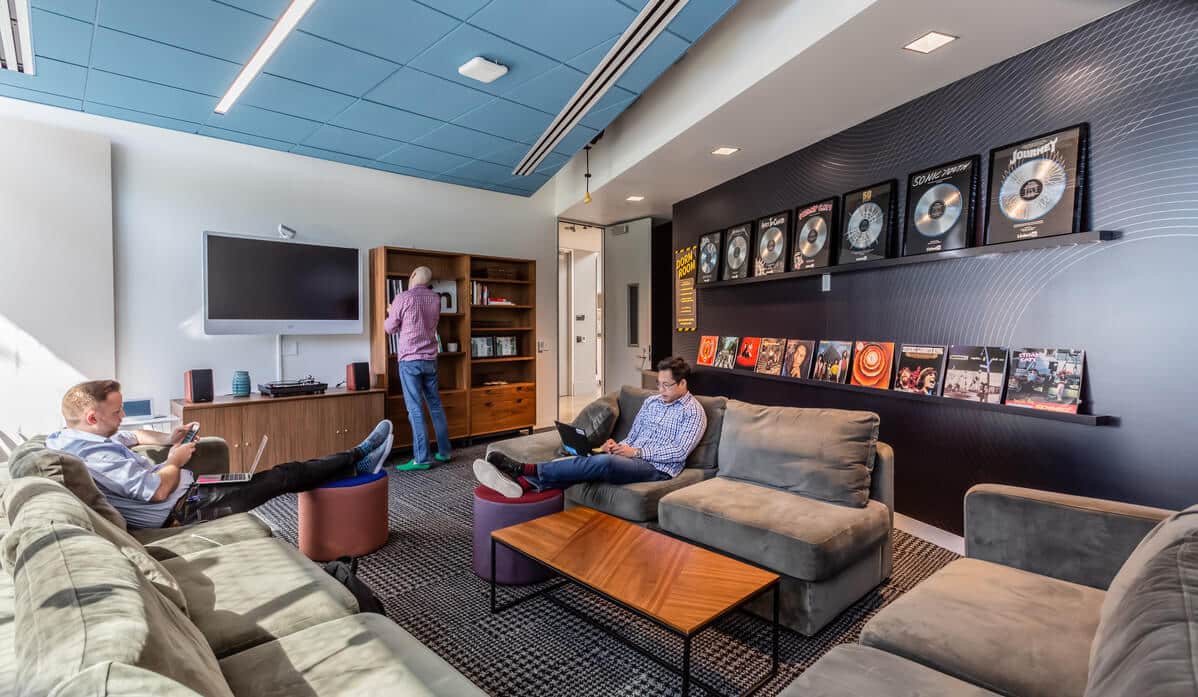
How do you think other companies could benefit from having this kind of space where workplace elements can be worked on in a safe environment?
Zinaman: Any company can benefit from experimentation. I don’t think you need a lab necessarily—you can do it on a smaller scale. It’s all about communicating your intentions well, collecting data, and not simply making decisions based off assumptions.
It’s really data-driven design. Doing experiments on a smaller scale allows you to constantly innovate and iterate spaces you already have while keeping employees happy.
Follow Lilli on LinkedIn to get her industry insights and find out more about how she is helping push the workplace community forward.
Do you think companies should have a safe space to experiment with their workplace? Join the conversation and leave us a comment below.
Photos:





